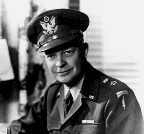The speed of reacton on this forum never ceases to amaze me

.
Great about the tanks, I think it will help. If you have room on that list I have an other suggestion (no, it never stops [:D]) At the moment the rout algorith uses (among others, and as far as I can see) the number of casualties, the time in which they are caused, and the percentage of the original strenght that is lost. For tank units this (very?) often translates in a rout when one tank is lost. Quite logical, because in a split second as much as a sixth of the force can be lost. But translated to the effects on the game it means that one lucky shot from a single at gun can rout a bn of Tigers (quite apart from the fact that I can't really imaging a tank unit routing. Retreating yes, but routing? Racing full throttle direction home???). So I think that for units like these the rout code might be needed to be reviewed. (Here to, I think, is a perceived threath more usefull to predict if a unit will retreat. The fact that a comrade was lost must be taken in account, but it should also matter if a single AT gun is firing, or 20 enemy tanks are shelling the unit).
Regarding the attacking code (and the same goes for defending), I think the problem (my problem) lies in the fact that the calling off of the attack, or the dropping back of the defender, is based on the casualty threshold. That works ok when the forces are reasonably balanced. But when the odds are more uneven, it seems to me that the deciding factor is more a percieved threath, and that any commander would break of the attack, or pull back, BEFORE any casualty threshold was reached..... (maybe unless he had "hold at all cost"orders, but even then... ).
This ties in with an other commend that I have regarding attacking troops. As far as I can see the troops attack until the casualty threshold is reached. Then they retreat (icon gets brown). In my opinion the troops should break of the attack earlier, but then not necesairly retreat, just not advance anymore. Especialy when attacking from several direction you now get often a "dance" of units advancing, retreating, advancing, around a target.
Bertram







